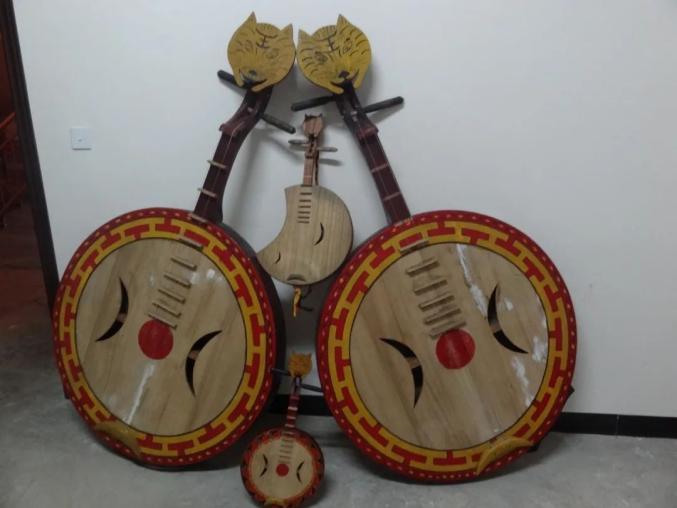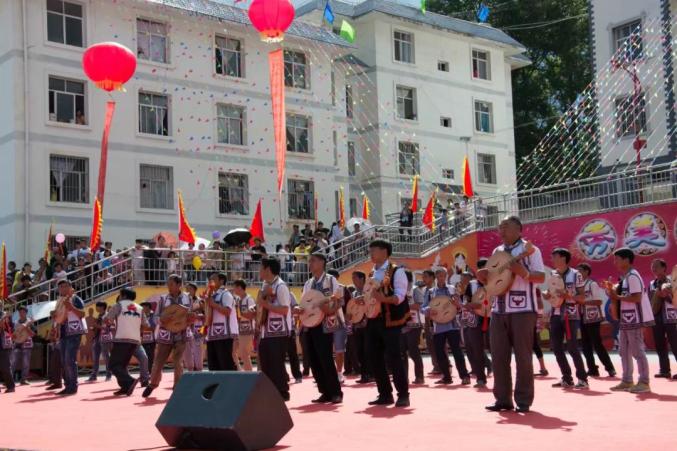The performance of the Yueqin, a national musical instrument, is inherited from Yongshan
The Yueqin originated from Ruan. Since the Tang Dynasty, it was differentiated from Ruan and became an independent musical instrument, and obtained the title of Yueqin. In the Qing Dynasty, the stem was shortened to the neck, and the Yueqin evolved into a modern style. "Yannan Xiaopu" records: "West Qin Opera... Its instrument... Huqin is the main instrument, and Yueqin is supplemented." It is also described in "Hankou Bamboo Branch Ci": "Yueqin, Xianzi, Huqin, the three are combined into a wonderful sound."

Therefore, Lianfeng City, known as "Old Yongshan", was Yongshan County from the eighth year of Yongzheng (1730) to 1951. The "Lianfeng City God Temple Theatre" as a county-level cultural relic was built in the second year of Daoguang, and the local opera troupe sang it. Most of them are performances of Yunnan Opera, Sichuan Opera, and Lantern Opera. The traditional Erxian Yueqin, which is used as an accompaniment for various operas, has gradually evolved from playing in the opera troupe to the leisure people's entertainment. More local culture has formed, forming its unique charm.
The Yueqin is a stringed instrument commonly loved by the Han, Yi and Miao people in Yongshan County. It has a long history, is widely spread, and has a crisp tone. It is often used in solo, folk instrumental ensembles, singing and dancing, opera and rap music accompaniment.
The Yueqin plays an important role in the life of the Yi people. Whether it is in the daily life of young men and women, or in the festivals, the playing of the Yueqin is indispensable. The boys played the moon qin, while the girls clapped or pulled their hands in harmony with the sound of the qin, and danced out a variety of beautiful dance moves. One or more of the violin players dance while playing, and then the crowd dances in a circle.

Yueqin has a crisp treble, bright midrange and rich bass. It can be played not only solo, but also in ensemble with other instruments. The timbre is very pleasant to the ears.
With its unique national characteristics and way of existence, Yueqin performance is representative of national traditional culture, which promotes social interaction between people, enriches people's cultural life, and promotes people's physical and mental health.
The Wuzhai Township People's Government attaches great importance to the traditional culture of the Yi nationality. It holds traditional cultural festivals of the Yi nationality every year, and regularly conducts campus training on intangible cultural heritage, which not only enhances the in-depth understanding of intangible cultural heritage, and feels the charm of traditional culture, but also enhances national pride. sense of cultural identity and enhance the awareness of the protection and inheritance of intangible cultural heritage.
Yueqin is not only a musical instrument, but also an exquisite handicraft and art with national characteristics. Its unique appearance and exquisite and gorgeous decoration bring a sense of pleasure to people. It plays a major role in promoting foreign cultural exchanges, enhancing national unity, and has high development and utilization value.
 渝公网安备 50010702504639号
渝公网安备 50010702504639号